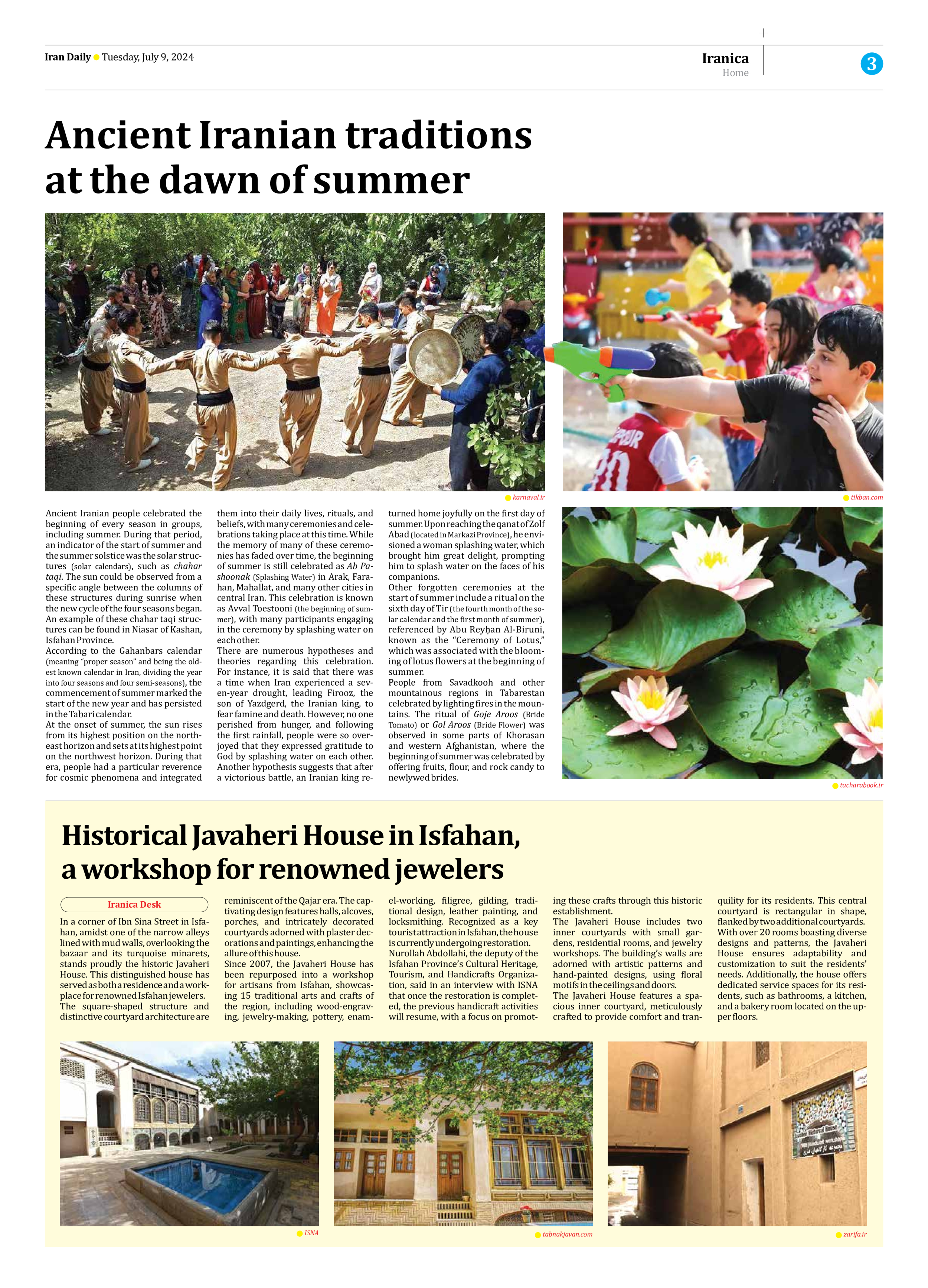
Ancient Iranian traditions at the dawn of summer
Ancient Iranian people celebrated the beginning of every season in groups, including summer. During that period, an indicator of the start of summer and the summer solstice was the solar structures (solar calendars), such as chahar taqi. The sun could be observed from a specific angle between the columns of these structures during sunrise when the new cycle of the four seasons began. An example of these chahar taqi structures can be found in Niasar of Kashan, Isfahan Province.
According to the Gahanbars calendar (meaning “proper season” and being the oldest known calendar in Iran, dividing the year into four seasons and four semi-seasons), the commencement of summer marked the start of the new year and has persisted in the Tabari calendar.
At the onset of summer, the sun rises from its highest position on the northeast horizon and sets at its highest point on the northwest horizon. During that era, people had a particular reverence for cosmic phenomena and integrated them into their daily lives, rituals, and beliefs, with many ceremonies and celebrations taking place at this time. While the memory of many of these ceremonies has faded over time, the beginning of summer is still celebrated as Ab Pashoonak (Splashing Water) in Arak, Farahan, Mahallat, and many other cities in central Iran. This celebration is known as Avval Toestooni (the beginning of summer), with many participants engaging in the ceremony by splashing water on each other.
There are numerous hypotheses and theories regarding this celebration. For instance, it is said that there was a time when Iran experienced a seven-year drought, leading Firooz, the son of Yazdgerd, the Iranian king, to fear famine and death. However, no one perished from hunger, and following the first rainfall, people were so overjoyed that they expressed gratitude to God by splashing water on each other. Another hypothesis suggests that after a victorious battle, an Iranian king returned home joyfully on the first day of summer. Upon reaching the qanat of Zolf Abad (located in Markazi Province), he envisioned a woman splashing water, which brought him great delight, prompting him to splash water on the faces of his companions.
Other forgotten ceremonies at the start of summer include a ritual on the sixth day of Tir (the fourth month of the solar calendar and the first month of summer), referenced by Abu Reyḥan Al-Biruni, known as the “Ceremony of Lotus,” which was associated with the blooming of lotus flowers at the beginning of summer.
People from Savadkooh and other mountainous regions in Tabarestan celebrated by lighting fires in the mountains. The ritual of Goje Aroos (Bride Tomato) or Gol Aroos (Bride Flower) was observed in some parts of Khorasan and western Afghanistan, where the beginning of summer was celebrated by offering fruits, flour, and rock candy to newlywed brides.







